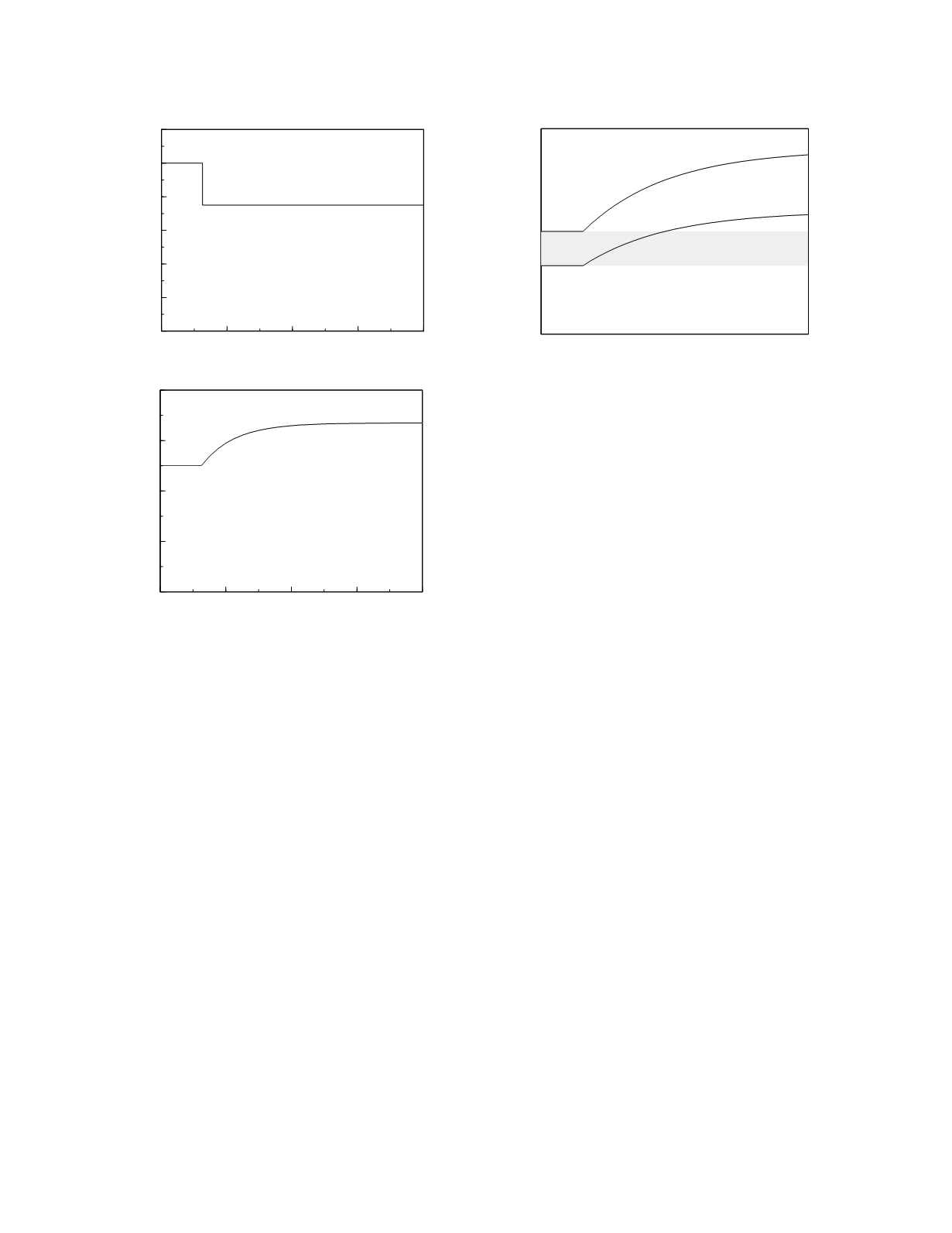
substance must change by a certain amount before
the change can be ascribed to an alteration in physi-
ologic status rather than to measurement
imprecision. In Figure 5.4, the time course of
plasma marker concentrations, with and without a
change in organ function, are shown as bands of
values that encompass 95 percent of the concentra-
tions that would be seen given a coefficient of
variability of 10% for the measurement variability in
both settings. There is overlap of the bands for a
period of time after the change in organ function,
indicating that during this period it is difficult to
detect the change in marker concentration; the rising
values can be ascribed to measurement variability.
Later on, the bands are well separated, indicating
that the change in marker concentration can be
distinguished from the pre-existing concentration.
The length of time it takes for a ongoing change
in marker concentration to be distinguishable from
the preceding steady-state concentration depends
upon (1) the half-life of the marker substance, (2)
the magnitude of the change in physiologic status,
and (3) the magnitude of the measurement
variability. A short marker half-life, a large altera-
tion in physiologic status, and a small degree of
measurement variability all allow for rapid apprecia-
tion of a change in marker concentration.
Conversely, a long time will be required to detect a
change in the marker concentration if the marker has
a long half-life, if the change in physiologic status is
small, or if the measurement variability is large.
In order to provide timely insight into a patient's
physiologic status, marker substances used for
monitoring purposes are chosen on the basis of rapid
changes in their plasma concentration following a
status change. These early indicators are not always
the same markers used to evaluate physiologic status
in the steady state. For example, albumin, which is
a standard marker of hepatic synthetic function, has
a low clearance rate and, consequently, a very long
half-life. Its plasma concentration changes very
slowly following an alteration in synthetic function.
Even following nearly complete hepatic shutdown,
as occurs in fulminant hepatic necrosis, the plasma
albumin concentration, corrected for changes in
plasma volume, declines gradually over a period of
weeks. In contrast, prealbumin, which has a short
plasma half-life, shows a marked reduction in its
plasma concentration in a matter of days following
the onset of hepatic failure.
Measurement variability
The simplest situation encountered in physiol-
ogic monitoring is that of two study results separated
in time with the clinical question being, "Has the
study value changed?" Due to measurement
Monitoring
5-4
0
40
80
120
160
Time (h)
0
20
40
60
80
100
120
Organ clearance function (percent)
0
40
80
120
160
Time (h)
0
20
40
60
80
Marker concentration
Figure 5.3
The response of a clearance function marker,
lower graph, to a change in organ clearance function, upper
graph.
Time
Marker concentration
Figure 5.4
The response of an organ function marker to a
change in organ function when there is variability in the
measurement of the marker.


